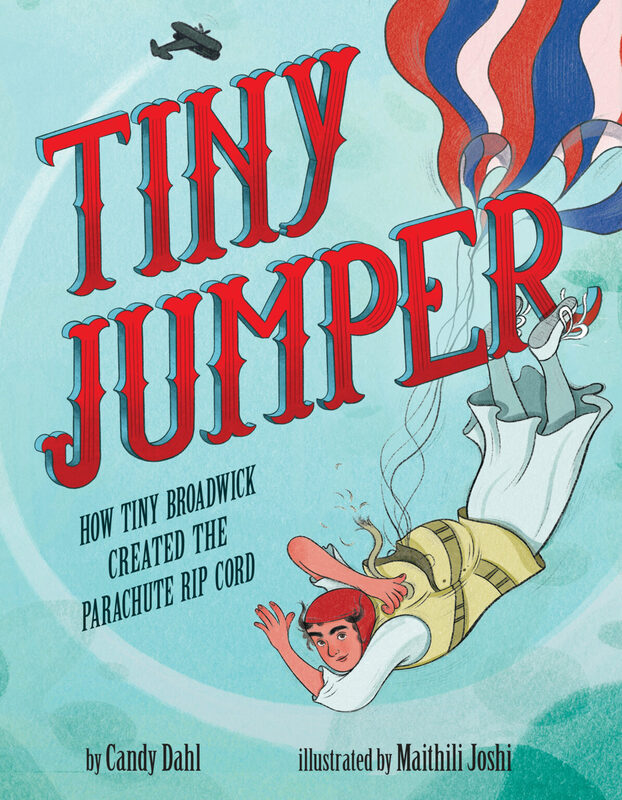By The Biography Clearinghouse As we come to the end of another calendar year, we reflect upon how much the world can change in just a few short months. Political turmoil, violence, and war threaten the lives of millions. Climate scientists tell us that 2023 was the hottest year on record. Devastating fires and floods ravaged cities, towns, and forests alike. These catastrophes may feel unique to our life experience, so it helps to remember that people before us have faced hardships too. Again, we turn to biographies to learn from the people among us and those who came before us. What lessons in leadership can we find? How do artists, faith leaders, scientists, activists, educators, and others work towards goals? Handle setbacks? Cope with prejudice? Persevere while facing devastation? Work collaboratively to create change? In this year-end blog entry, we share a few picture book biographies from 2022 and 2023 that were inspiring to us, as well as preview a 2024 biography. With best wishes for peace in the New Year, The Biography Clearinghouse Team
Winter Hiatus Announcement
By Julie Waugh and Erika Thulin Dawes on behalf of The Biography Clearinghouse.  March is Women’s History month and picturebook biographies are a powerful way to recognize and celebrate the accomplishments of women. In the most recent Biography Clearinghouse entry, we explore Victoria Tentler-Krylov’s picture book biography Building Zaha: The Story of Architect Zaha Hadid. As a child, Zaha Hadid was fascinated by aspects of her surroundings that others passed by without observing. Her eye for the beauty in nature developed into a vision for architecture that challenged existing perceptions of what a building could be. In Building Zaha, Victoria Tentler-Krylov describes how these seeds of interest planted in childhood grew into a career and a passionate commitment to an artform. Tentler-Krylov’s water illustrations soar across the page, lifting readers into Zaha’s vision of what humankind’s structures might aspire to be. In the Biography Clearinghouse entry for Building Zaha, you will find an interview, in which Victoria Tentler-Krylov describes how her own education as an architect influenced her writing of Zaha Hadid’s story. You’ll find teaching ideas that focus on character development, mentoring, and goal setting, as well as ideas that build content knowledge about the relationship between architecture and nature, the design processes of architecture, and women leaders in the field. Like us, you will be inspired by the lessons that author/ illustrator Victoria Tentler-Krylov learned from studying the life of Zaha Hadid: “Trust your own voice. Trust your own vision.” Here is an excerpt of the teaching ideas in the Biography Clearinghouse entry for Building Zaha: Exploring Zaha’s Designs  Zaha Hadid became known as “the queen of the curve” in the architecture world. She created buildings with shapes that people thought impossible to build. Invite students to explore, notice, and wonder with Zaha Hadid’s amazing projects:
Another recent children's book biography about Zaha Hadid is The World is Not a Rectangle by Jeanette Winter. Winter’s book focuses heavily on how Zaha Hadid’s work is influenced by the natural world, whereas Tentler-Krylov’s book focuses more on Zaha the person. The paired texts could provide a powerful invitation for students to compare and contrast the different ways in which authors made choices about how to share a person’s life in picture book format. Breaking Boundaries: Female Architects
Designing for Form and Function: Thinking Like an Architect Victoria Tentler-Krylov shared how one of her favorite illustrations in Building Zaha is the spread where a young Zaha is the only character in a crowded space who is looking up in a beautiful mosque. Looking closely and wondering can help you think and work like an architect. Looking closely and wondering can also help you focus on form (what a space looks like) in architecture, and how well that form meets function (what is going to happen in the designed space). Form and function are ideas that need to work hand in hand for an architect to create a successful place to live or work. Some people told Zaha Hadid that form was more important to her than function. She was criticized that her creative, uniquely designed spaces did not use space as well as they could, or did not use space as efficiently as possible. This was part of why, early in her career, people told Zaha that she would only be a “paper architect” - an architect that would only have designs on paper and not made into buildings.
Erika Thulin Dawes is Professor of Language and Literacy at Lesley University where she teaches courses in children’s literature and early childhood literacy. She blogs about teaching with children’s literature at The Classroom Bookshelf, a School Library Journal blog, and is a former chair of NCTE’s Charlotte Huck Award for Outstanding Fiction for Children. Julie Waugh teaches 8th grade ELA at Smith Junior High and serves as an Inquiry Coach for Mesa Public Schools. She delights in the company of children surrounded and inspired by books. A longtime member of NCTE, and an enthusiastic newer member of CLA, Julie is a former committee member of NCTE's Orbis Pictus Award for Outstanding Nonfiction for Children. |
Authors:
|
CLA
About CLA
|
Journal of Children's Literature
Write for JCL
|
ResourcesCLA-sponsored NCTE Position Statements
|
Members-Only Content
CLA Video Library
|
© COPYRIGHT 2018.
ALL RIGHTS RESERVED |










 RSS Feed
RSS Feed